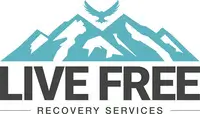Post-Traumatic Stress Disorder and Addiction
Co-occurring disorders, such as PTSD and SUD, cause double the trouble.
Home > Treatment > Dual Diagnosis Treatment > Post-Traumatic Stress Disorder and Addiction
People who develop substance use disorders (SUD) often also develop mental disorders. In the same vein, those who suffer from mental illness are also more prone to relying on opioids for self-medication, hence developing dependence.
We call these cases of two or more disorders co-existing in one person dual diagnosis, comorbidity, or co-occurrence.
Post-traumatic stress disorder or PTSD, is one of those common mental illnesses that comes with drug addiction. Left untreated, these comorbid mental conditions create problems that may affect the overall quality of life of an individual.
For those recovering from PTSD, drug use can make the post-trauma symptoms worse. To people trying to recover from addiction, PTSD increases the risk of relapse.
Thankfully, you don’t need to combat these health concerns alone. With expert healthcare providers, supervised medication, and evidenced-based treatment programs, you can overcome your co-occurring drug addiction and PTSD.
But healing starts with understanding your condition. So, in this post, we’ll explain what PTSD is and how it correlates to substance abuse. We’ll also walk you through the most effective treatment approaches to help get you back on track.

What Is Post-Traumatic Stress Disorder (PTSD)?
The World Health Organization (WHO) reports over 3.9% of the world’s population suffers from post-traumatic stress disorder. It’s been called many names, including “shell shock,” battle fatigue, and railway spine.
But what is PTSD exactly?
Causes of PTSD
The American Psychiatric Association defines post-traumatic stress disorder as a psychiatric disorder occurring in people who experienced or witnessed traumatic events. These events are typically physically or emotionally threatening to the individual’s well-being.
Experiencing war, natural disasters, intense accidents, assault, violence, and bullying can all be risk factors resulting in post-traumatic stress disorder.
People normally feel extreme fear when witnessing or experiencing stressful occurrences, such as an accident. But most would naturally recover with time without developing serious mental health issues.
However, some may experience lasting psychiatric conditions, such as PTSD, depressive disorders, anxiety disorders, or even SUD. These symptoms can last months or years without professional intervention.
Not everyone who’s been through stressful events develops PTSD, though. In some cases, knowing that a close relative or loved one experienced trauma is enough to be afflicted with this mental health condition.
Common PTSD Symptoms
Symptoms of PTSD can vary from person to person depending on its severity. Generally, when an individual suffers from post-trauma, they exhibit notable signs such as:
- Re-experiencing symptoms: These are repeated and unwanted flashbacks or dreams of the traumatic event, accompanied by intense fear or anxiety. Often, it makes the individual feel they’re reliving the experience all over again.
- Hyperarousal symptoms: These are emotional symptoms that make the individual feel or think they’re in danger when they aren’t. They often become hypervigilant to their surroundings, frequently scanning for potential threats.
- Coping by avoidance: The individual with PTSD may refuse to talk about their experience and avoid it altogether. They’ll avoid anything that reminds them of their trauma (stressors) in fear of remembering the event.
- Changes in cognition, mood, and emotions: A person suffering from PTSD may find it difficult to focus and concentrate. Often, they feel negatively about themselves or the world in general. Isolation and self-blame are also common.
PTSD In People Suffering From Substance Abuse
According to the National Institute on Drug Abuse (NIDA), more than 7.7 million adults with SUD also suffer from a comorbid mental illness. That’s 7.7 million out of the 46.8 million Americans battling addiction as reported by the American Addiction Centers.
From those numbers, co-occurring SUD and PTSD have a prevalence rate ranging between 25% to 49%. In other words, it’s alarmingly rampant.
Individuals who’ve gone through prolonged exposure to traumatic experiences have also been found to be the people most prone to comorbid PTSD and drug addiction.
Army veterans, for one, have an extremely high case of disorder co-occurrence. According to the U.S. Veterans Administration, 2 in 10 vets with PTSD also battle with SUD.
Why is that the case, though?
Well, recent studies reveal that people suffering from post-trauma may rely on using illicit substances to alleviate or avoid their PTSD symptoms.
However, although the negative feelings may temporarily subside, opioid or alcohol abuse can make the same symptoms worse over time.
Another theory explaining the correlation between drug addiction and PTSD points to the brain’s structure, offering an enhanced reward system.
Given their altered mental state, using illicit substances while suffering from post-traumatic stress may induce a stronger “high” for the individual, reinforcing dependence.
Treating Co-Occurring PTSD and Substance Use Disorders
Treating co-occurring disorders takes careful assessment and planning. Treatment programs often use a combination of supervised medication and psychotherapy.
Supervised Medication
During treatment, your physician may prescribe the following medication to address the complex and overlapping symptoms of a PTSD-SUD comorbidity.
- Naltrexone: This is an FDA-approved medicine used for treating SUD and opioid use disorder (OUD) in patients. It comes in pill or liquid form, administered daily or monthly. Naltrexone suppresses withdrawal symptoms, particularly craving.
- Methadone: An analgesic drug used as a substitute for morphine, heroin, and other opioids. It blocks the high from illicit substances and alleviates the withdrawal symptoms. Methadone is often used for pain management in individuals with chronic illnesses.
- Buprenorphine: Buprenorphine is a drug used for replacement therapy in patients with severe addiction. It produces similar but weaker effects to other opioids. Used correctly, Buprenorphine reduces withdrawal symptoms and cravings in SUD patients.
- Lofexidine: Lofexidine is another withdrawal management drug. It prevents your brain from releasing norepinephrine, a hormone that contributes to your symptoms. The drug comes in tablet form and is taken multiple times every day to control withdrawal.
Psychotherapy
Psychotherapy or “talk therapy” is an evidence-based treatment with significant success in helping patients recover from comorbid disorders. Depending on the center, you may receive one or more of the following:
- Cognitive behavioral therapy (CBT): CBT is a form of psychological treatment commonly used for PTSD, SUD, and a host of other mental issues. It teaches patients with SUD to become aware of their thoughts and feelings, and how they impact recovery. For PTSD, CBT addresses maladaptive thinking and behaviors, offering coping techniques to address them.
- Cognitive processing therapy (CPT): This is a specific version of CBT aimed at people suffering from post-traumatic stress. In practice, it helps patients learn to change unhelpful beliefs related to their trauma. CPT facilitates long-term healing by teaching continuous evaluation and modification of thoughts and feelings in PTSD patients.
- Exposure-based therapy (EP): Exposure therapy is a behavior-based treatment designed to target learned behaviors the patient used to avoid or cope with trauma. Exposure therapy reduces the person’s fear and anxiety which results in these learned behaviors. This is done through direct, imaginary, and interoceptive exposure methods.
- COPE therapy: Concurrent Treatment of PTSD and Substance Use Disorders Using Prolonged Exposure(COPE) is a combination of exposure therapy and relapse prevention. This integrated treatment uses a series of therapy sessions. In every session, the clinician teaches the patient about the condition, techniques to manage their symptoms, and how to confront their stressors through exposure exercises.
- Seeking Safety (SS): Similar to COPE, Seeking Safety is a trauma-focused treatment model aimed at resolving PTSD and SUD simultaneously. Unlike conventional therapies, Seeking Help facilitates healing by focusing on the present, instead of the past trauma. It also introduces coping skills to promote healthy thinking, behaviors, and emotions.
- Eye movement desensitization and reprocessing (EMDR): EMDR is a variant of talk therapy that concentrates on trauma processing. Its process involves actively remembering the upsetting memories in the presence of a clinician. EMDR also incorporates a back-and-forth movement or sound as a crucial aspect of the treatment.
Final Thoughts: Getting Help
Co-occurring disorders, such as PTSD and SUD, cause double the trouble. So, don’t hesitate to seek professional help if you or your loved ones are suffering from these comorbid conditions.
Treatment centers like Live Free Recovery Services will provide personalized and effective treatment programs, state-of-the-art facilities, and all the resources you need to get the life you deserve back.
References:
- https://www.nimh.nih.gov/health/ topics/substance-use-and-mental-health
- Comorbidity: What to Know (webmd.com)
- Psychiatry.org – What is Posttraumatic Stress Disorder (PTSD)?
- Hyperarousal symptoms in PTSD – NeuRA Library
- https://nida.nih.gov/research-topics/comorbidity/comorbidity-substance-use-other-mental-disorders-infographic
- https://americanaddictioncenters.org/ addiction-statistics
- Medications for Substance Use Disorders | SAMHSA
- Concurrent Treatment of PTSD and Substance Use Disorders Using Prolonged Exposure (COPE): Patient Workbook | Oxford Academic (oup.com)https://www.ptsd.va.gov/ understand_tx/emdr.asp
Did this article answer your questions?
"*" indicates required fields
Take the First Step Towards a Brighter Tomorrow
At Live Free Recovery, we’re committed to walking alongside you on every step of your journey. Our compassionate team is here to provide the guidance and support you need to overcome addiction and reclaim your life. Don’t wait—reach out today to speak with someone who truly understands your struggles and can help you take that important first step toward healing and a fresh start.
Your path to recovery starts here.
